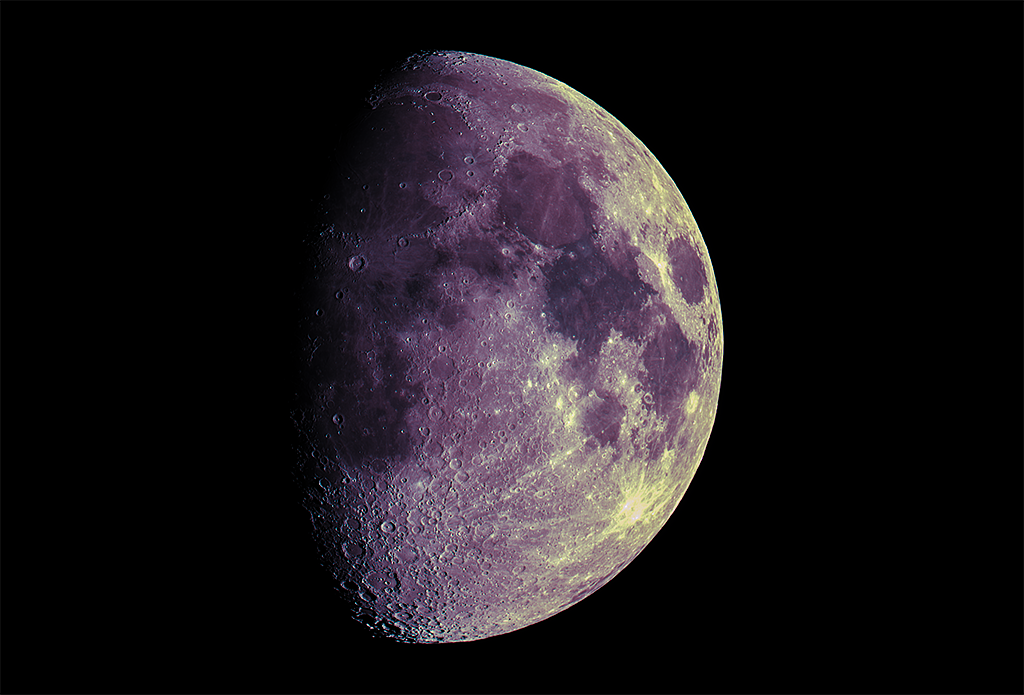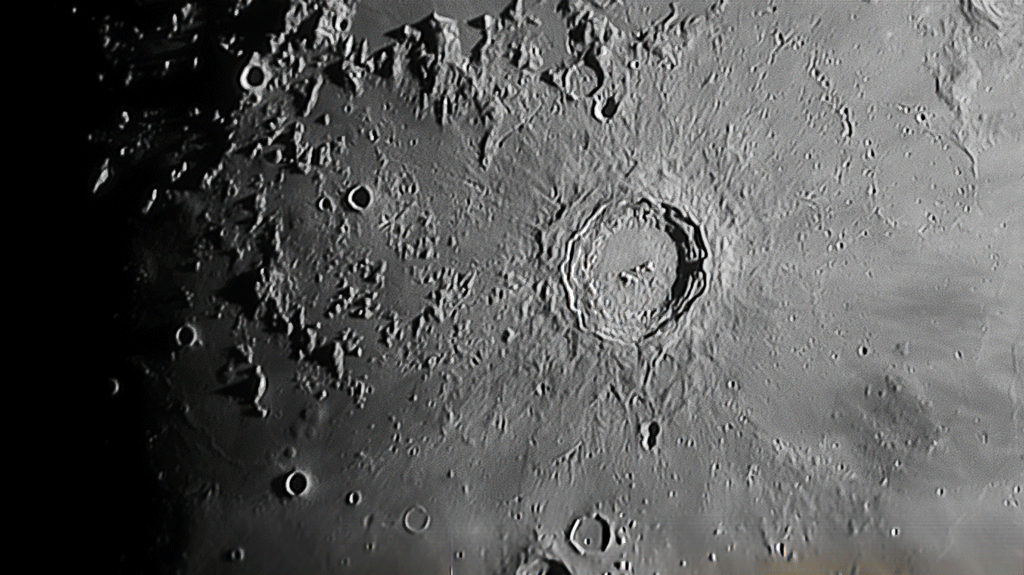Whole moon view
Earth’s moon normally appears grey to the naked eye but in this astrophotograph of the waxing gibbous moon, small colour differences have been greatly exaggerated. The Sea of Tranquility (Mare Tranquillitatis) is the dark blue area right of centre; white lines radiate from the crater Tycho at bottom left; and Copernicus, left of centre, has purplish tones. Different colours correspond to real differences in the chemistry of the lunar soil, for example, blue hues correspond to titanium rich areas, while orange and purple colours show regions relatively poor in titanium and iron.
This astrophotograph was taken using the equipment detailed below together with the Altair Hypercam 294C PRO colour fan-cooled camera and the Revelation Adjustable Field Flattener. Also, although unconventional, an Altair quad-band one-shot colour (OSC) 2″ filter was installed in this optical assembly too. This was an oversight, but doesn’t seem to have caused any harm—if anything, it may have acted as an effective light pollution filter. I collected 1317× 10-ms frames (gain 900), calibrated them using 60× dark frames, and selected the best 25% for stacking.
Clavius lunar crater
The moon’s mountainous south pole region is near the top of this detailed telescopic view. The lunar terminator, the sunrise shadow line, is receding to the right. The long shadows enhance the view of a dense field of craters. The large prominent crater towards the bottom (north) is Clavius, nearly 231 kilometers in diameter and pocked with smaller, more recent, overlaying impact craters. The most notable of these is a curving chain of craters that begin with Rutherfurd on the southeastern rim, then arc across the floor in a counterclockwise direction forming a sequence of ever diminishing diameters.
This astrophotograph was taken using the equipment detailed below together with the Altair GPCAM3 290C colour camera (with UVIR window fitted) and a Celestron X-Cel LX 3× Barlow. I collected 678× 10-ms frames (gain 900), calibrated them using 60× dark frames, and selected the best 50% for stacking.
Copernicus lunar crater
The prominent crater at the centre of this astrophotograph is the Copernicus crater. It is located northwest of the centre on the side of the moon facing Earth. It features a prominent ray system, central peaks rising above the crater floor and rugged crater walls.
There are many interesting features to observe in and around Copernicus. To the bottom left (south west) is a small, bowl-shaped lunar impact crater named Hortensius. To the north of Hortensius is a collection of six lunar domes, many with a tiny craterlet on the summit. These are shield volcanoes that were formed by a highly viscous type of lava. These are just one feature of many that I find interesting in this astrophotograph, and they are only visible due to the long shadows of sunrise.
This astrophotograph was taken using the equipment detailed below together with the Altair GPCAM3 290C colour camera (with UVIR window fitted) and a Celestron X-Cel LX 3× Barlow. I collected 1019× 10-ms frames (gain 900), calibrated them using 60× dark frames, and selected the best 50% for stacking.
Equipment
- Explore Scientific ED 102 mm Apo f/7 refractor
- Sky-Watcher EQ5 PRO SynScan GOTO equatorial mount
Software
- Sharpcap
- PIPP (Planetary Imaging Preprocessor)
- AutoStakkert!
- Registax
- Photoshop




